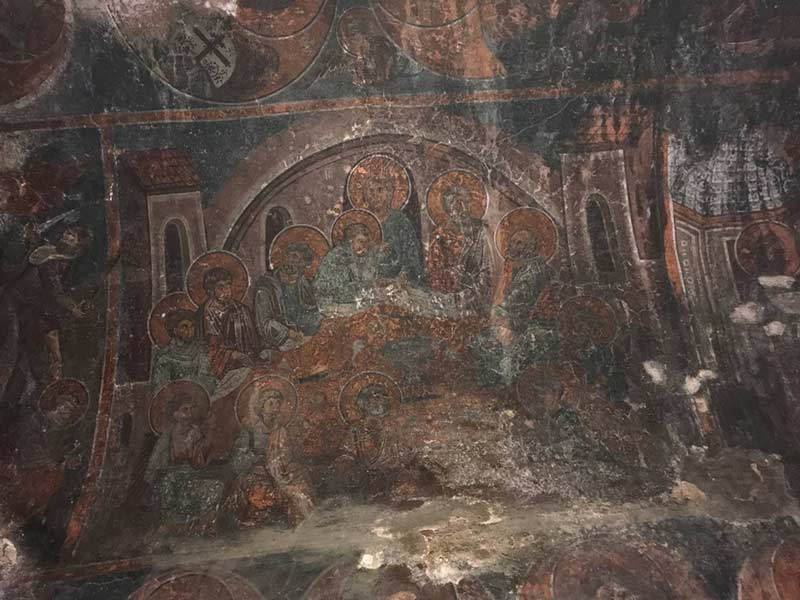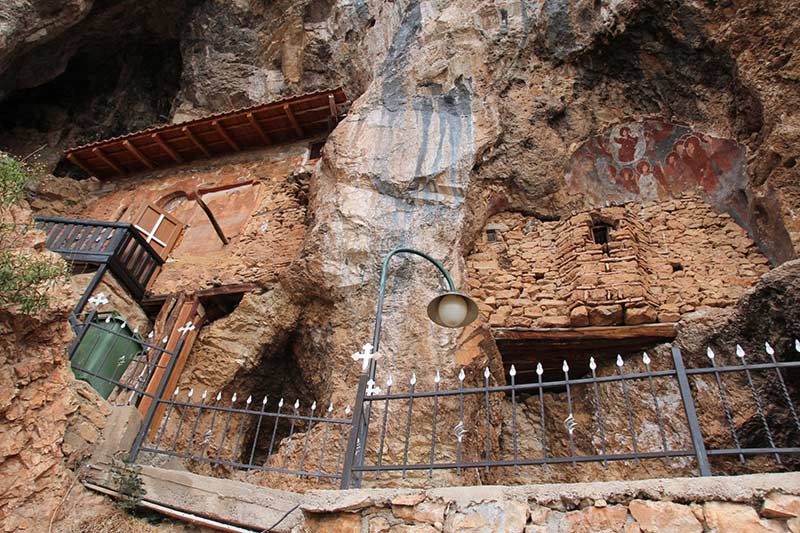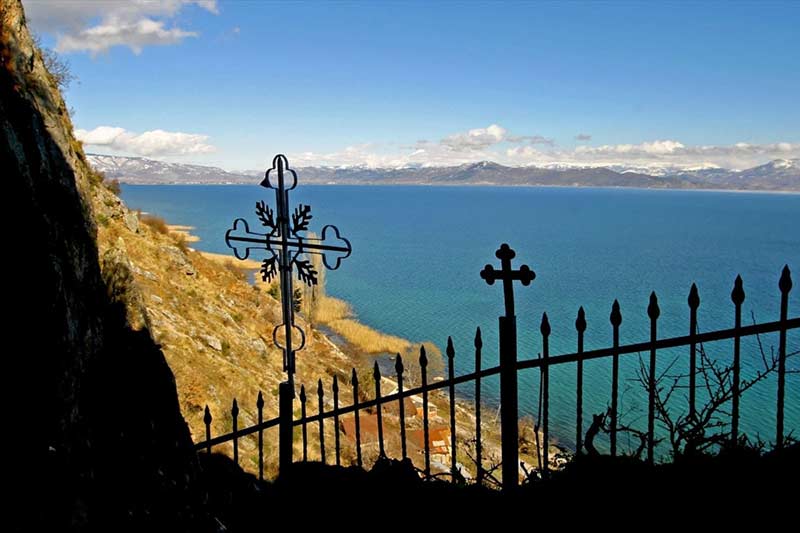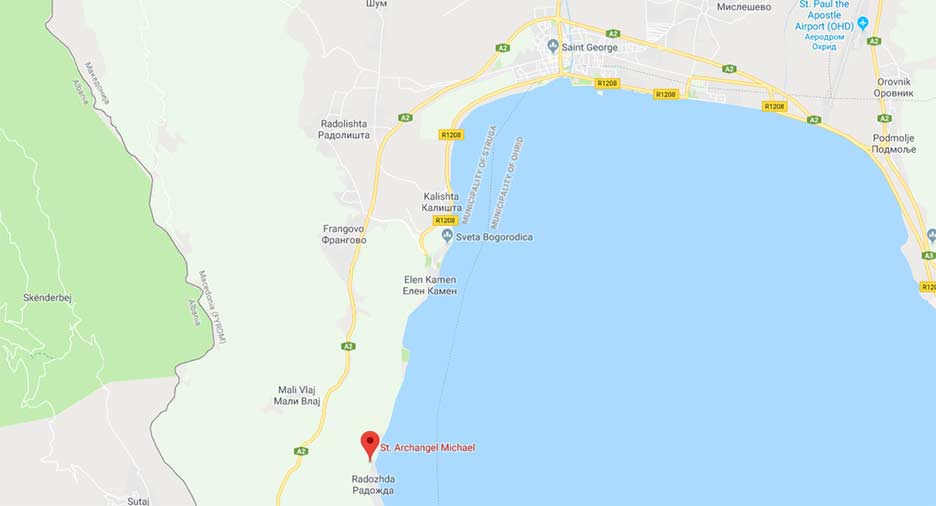Rising high above the village of Radozda, in the picturesque rocky landscape and only some hundred meters from the shores of Lake Ohrid, the unwavering medieval monks adapted the small but rich in painted decoration space for their abode and dedicated it to the heavenly archistrategos, the Archangel Michael.Despite the damages that the painting suffered on several occasions, today, the multiple layers of frescos dating from the 13th, 14th, 15th and 17th centuries can still be seen in the naos and the narthex, as well as the modestly decorated wooden iconostasis with icons from the 19th century.
Table of Contents
The earliest layer of fresco painting, mostly discovered on the south wall of the narthex, revealed the composition the Miracle at Chonae, a representative thematic, iconographic and visualized fragment from the narratives about the feats of Archangel Michael that stands out as the hallmark of this church. It is believed that the central place given to this scene and the meticulously shaped space are the result of the wish to pay tribute to the earliest shrine of the Archangel Michael at Chonae.
On the same wall, under a layer of frescoes from the 14th century, a depiction of St. Paraskevy has also been discovered, while on the west wall, the figures of St. John Calabytes and the local saint Clement of Ohrid. The fresco painting in the naos which dates from the 15th century is a separate unit. Here, we come across the Holy Healers Cosmas and Damianus and two figures of female saints (the east wall), Ss. Constantine and Helena (south wall), and on the north wall, St. Theodore of Tyron and St. Theodore Stratilate, Hieromartyr George, Archangel Michael and the composition of the Deesis can be also identified. The second zone is dedicated to the scenes from the Great Feasts, while Christ Pantocrator is painted in the area where the dome is customarily built. Below this painting are the figures of the prophets. The figure of the patron Archangel Michael on the east façade dates from the late 17th century. The stylistic and painterly features of the earliest painting which make this cave church in Radozda so famous speak of the contemporary challenges that the fresco painters faced as they worked in the context of the painterly tendencies of the proto- Palaeologue and Palaeologue art, skilled in the organization of the delicate space and impressive in their expression of the subtle character of the saints’ figures.
All the later “replicas” and/or newly formed painting units confirm the exceptional place that this shrine holds as a rare example of a church built in the specific natural environment on the shores of Lake Ohrid, offering a glimpse into the history of many centuries and exceptional artistic potential.
360 View of the Cave Church
St. Archangel Michael Gallery
The Village of Radozda video
Location of St. Archangel Michael Church

Virtual Macedonia
Republic of Macedonia Home Page
Here at Virtual Macedonia, we love everything about our country, Republic of Macedonia. We focus on topics relating to travel to Macedonia, Macedonian history, Macedonian Language, Macedonian Culture. Our goal is to help people learn more about the "Jewel of the Balkans- Macedonia" - See more at our About Us page.
Leave a comment || Signup for email || Facebook |
History || Culture || Travel || Politics






















